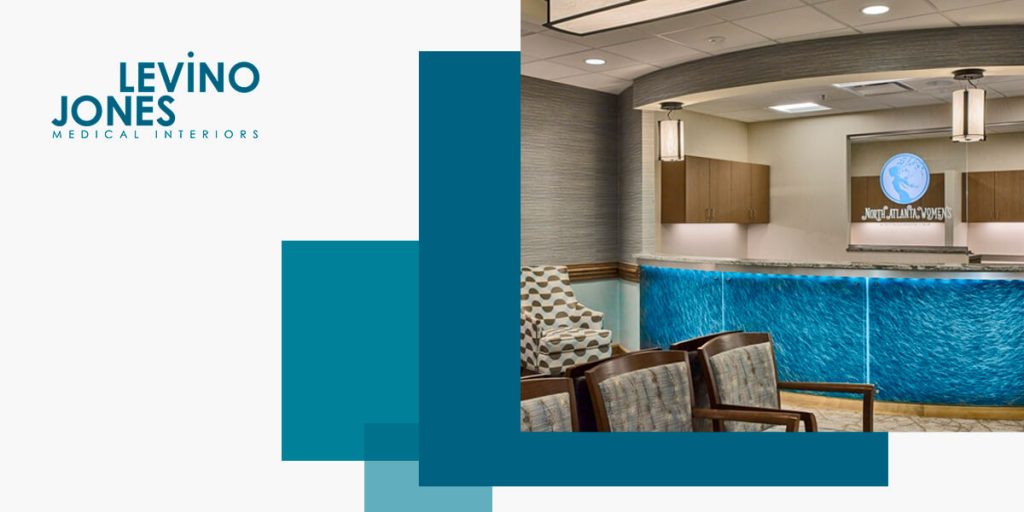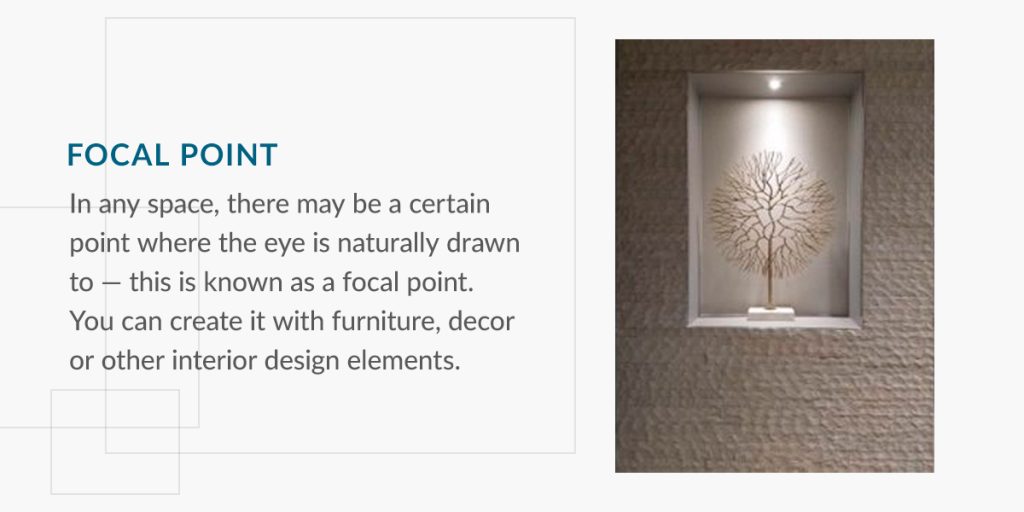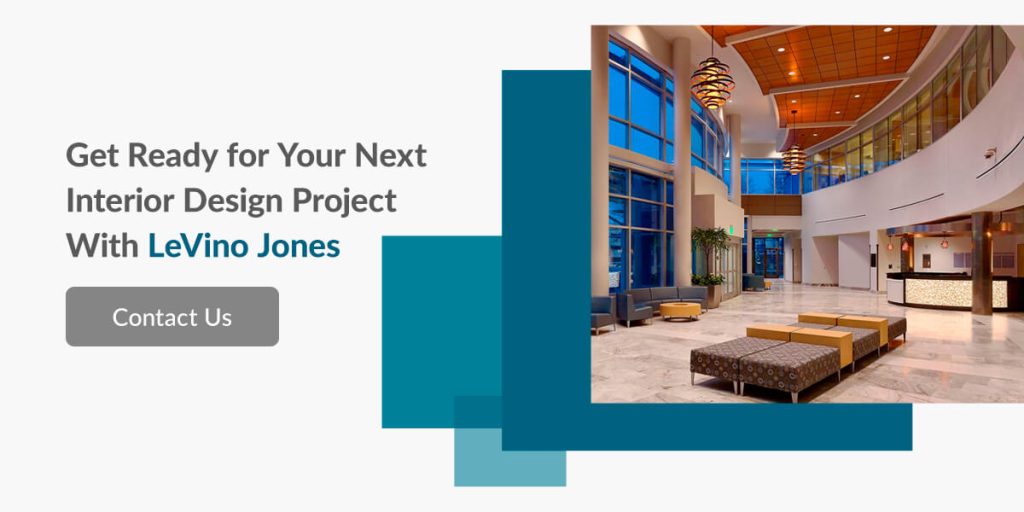
If you’re starting an interior design project, you know the options can be overwhelming. Much of the industry jargon can sound confusing, especially with many of the terms borrowed from other languages. However, having a good understanding of the terms to know in interior design can help you better communicate with your design team and know just what you want for your space.
Learning more about the common interior design terms can also be fun and help you prepare for your project, no matter how big or small.
In the world of interior design, common terms include:
When redesigning, renovating or building a new space, you must keep the Americans with Disabilities Act (ADA) in mind. Your area needs to include accessibility accommodations that the ADA requires, such as wide doorways and hallways, measured countertop heights and doors that operate from a reachable button.
Lightweight white panels laid into a ceiling grid with lights to soundproof the room. These tiles come in wood, metal, cork or soft fiber materials.
Often used in the initial stages of planning a design, a bubble diagram lays out the circulation, traffic flow and main functions of a building or room. It may divide a space into “zones” to best determine a layout.
Sometimes referred to as millwork, this process is all about the building of “boxed furniture,” such as cabinets, drawers, or similar storage features.
This refers to space’s personality and style. While any space can adhere strictly to any one school of design, the inhabitants or designers often infuse their own take on a style into the space as well, giving it character.
Also known as traffic flow, circulation is how people move about in a space. Major circulation routes involve the larger architectural elements of a building, like hallways and staircases that allow movement between rooms. Minor circulation patterns deal with the placement of furniture within a room and how people move around them.
This refers to windows aligned high up on a wall, above eye level.
The interior design of non-residential spaces. Also called contract design.
Color combinations that appear directly across from one another on the color wheel, such as red-green, orange-blue, and yellow-purple. These combinations are known to work well together in any type of design.
Down lighting can accentuate any interior aspect you desire by adding a softer, more inviting level of light to your medical office. These lights are mounted on the ceiling and are typically round, but also come in a square shape for more contemporary installations. Down lighting is sometimes referred to as can lighting.
Eclectic design is a mixture of design styles blended together.
An elevation is a drawing showing the walls of an interior. It includes doors, windows and any built-in features to show what a room may look like. For example, casework elevations are drawings that specifically show what your cabinetry will look like.
Faux refers to any design elements that are artificial but meant to mimic genuine materials or fixtures. It’s often a way to get an authentic look at a more affordable price.
This is an ancient Chinese interior design method based on harmonizing spaces by arranging furnishings and decor according to the energies and forces present in a room.
A floor plan is a drawing or diagram that shows a space as seen from above. It’s meant to show the relationship of rooms and spaces and their measurements, as well as the location of walls, major elements, utilities and doors.

In any space, there may be a certain point where the eye is naturally drawn to — this is known as a focal point. You can create it with furniture, decor or other interior design elements. It’s the one point in the room that influences all the other design elements around it.
Function refers to how a space is intended to be used. Designers must consider the function, or utility, of a space to create harmonious interiors that serve the correct purpose. For example, a waiting room, exam room and office space all have different functions and design goals.
Harmony refers to the balance of color schemes and design elements in a space so the overall effect results in a unified scheme.
Hue refers to one of the main properties of a color.
This style of architecture and design came about in the decades following World War II and features large windows, open concept floor plans and sleek modern lines and furnishings. Mid-century modern designs are popular in both residential and commercial settings.
These are colors that are toned down and often coordinate with just about any other colors. They are often made by mixing complementary colors or by adding white, black or grey to any other color.
A small area of a room that is recessed or set apart from the rest of the space.
Primary colors are red, yellow and blue. These colors cannot be created by mixing any other colors together, yet when these colors are mixed, you can create other colors.
The process of gathering and analyzing information about a problem or project before trying to solve it with design.
Proportion is the relationship of the size and scale of different elements of a design to one another.
Resilient flooring options are excellent for easy cleaning and durability in medical environments. Resilient flooring comes in epoxy, rubber or vinyl materials to create a comfortable and reliable material for your workspace. This type of flooring can come in the form of tiles or sheets.
This term refers to the sketches or quick drawings of a design’s plans, color schemes, traffic flow, spatial relationships or any other design aspects.
A sconce is a lighting fixture anchored to the wall.
Secondary colors are made by mixing primary colors together. Secondary colors include green (yellow + blue), orange (red + yellow) and purple (red + blue).
The specifications in your interior design project include detailed documentation of the products that are to be used, and may also include the process for installation of furniture, lighting fixtures, furnishings and fittings within your medical space.
Transition strips are essential for creating a smooth boundary between different floor types from room to room. Suppose one space uses carpet and the next room uses vinyl tiles — a transition strip will separate the two materials, typically in a doorway, to either ease the transition between different flooring heights or being together two dissimilar flooring types.
The cloth and cushioning materials on soft furniture pieces such as chairs and couches are called upholstery.
This refers to any interior window coverings that may be used for insulation, privacy or decorative style. Window treatments include curtains, shades, blinds and any other window coverings.
In the later stages of the design planning, a working drawing is a finalized rendering of plans, elevations, sections and other details that help inform the final construction.
This refers to dividing a space into functional zones for the best traffic flow and most practical use.

If your medical space is ready for an update, it’s a good idea to brush up on medical interior terminology as well as your state’s building safety and practice regulation codes to prepare. The next step is to contact a qualified professional interior designer.
At LeVino Jones, our team works exclusively with medical interiors, so you can trust you’ll get a revamped space that works for your business and aligns with all building and safety codes for your industry. We communicate and work with you every step of the way, ensuring you get exactly what you want and understand the process. Contact us today for all your medical office design needs, whether a blueprint or a campus interior design revamp.